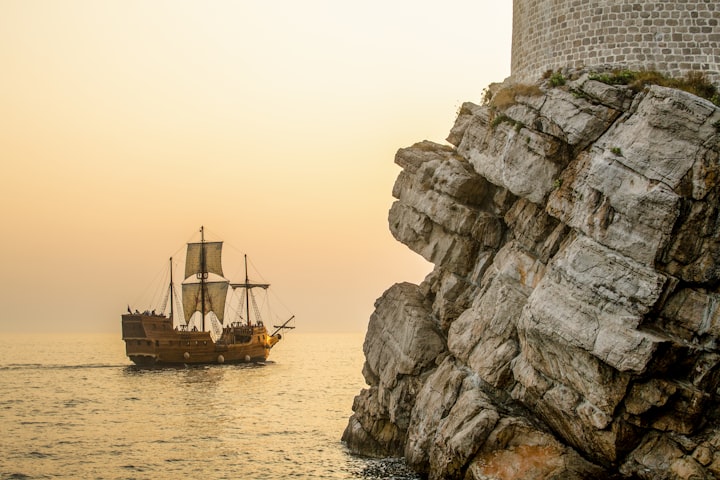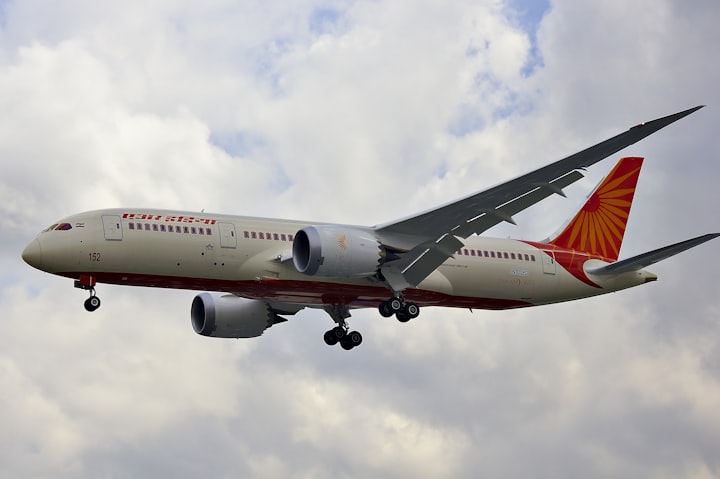The Columbus Hoax: Who Really Discovered America?
Let's debunk the Columbus hoax.

On the second Monday in October, the people of the United States commemorate Columbus Day. This is the anniversary of the day in 1492 when European explorer Christopher Columbus “discovered America” by landing in the Bahamas and opening European exploration.
However, Columbus was not the first European to travel to the Americas. He may also have been preceded by travelers from Europe and other parts of the world.
By Land and By Sea
Of course, Columbus was certainly not the first to “discover” America because native peoples were already living there when he arrived.
They are generally believed to be the descendants of hunter-gatherers who journeyed from Asia 15,000 years ago across the land bridge that once linked Siberia and Alaska.
While the first people in the New World may have walked overland from Siberia, they may also have travelled over water.
Boats have been around for hundreds of thousands of years, and the early hominid Homo Erectus may have constructed the first watercraft over 800,000 years ago.
Consequently, many theories about other people who travelled to the Americas. There are claims that ancient Phoenicians, Hebrews, Romans and Egyptians sailed.
There is also speculation about Polynesian, Chinese, Japanese, South Asian, Arab and African explorers. However, the evidence for most of these claims is scant or inconclusive.
Exploratory voyages have proved that they could reach American shores by boat from either the east or the west. In 1947 Norwegian explorer Thor Heyerdahl led the famous Kon-Tiki Expedition across the Pacific Ocean from Chile to Easter Island on a balsa wood raft.
In 1970 Heyerdahl crossed the Atlantic in the Ra, a craft made of reeds, to demonstrate that the ancient Egyptians could have reached America.
Then in 1976, British explorer Tim Severin sailed a leather boat from Ireland to Newfoundland to show that Irish monks would also have been able to make the Atlantic crossing.
But although long ocean voyages to America were theoretically possible, this does not prove that they happened.
Pacific Pathfinders
There is, however, evidence that early Polynesians made it across the Pacific to America. The Polynesians were superior navigators and explorers who made great sea voyages using their intimate knowledge of the stars, wave and cloud patterns, and other natural signs.
They found many remote Pacific islands which Europeans did not discover for hundreds of years after Columbus and travelled as far as Hawaii in the north and New Zealand in the south.
Therefore, it would not be surprising if Polynesians had found their way to the Americas. Linguist Kathryn A. Klar and archaeologist Terry L. Jones found that some southern California coastal people used a Polynesian style bone fishhook and made sophisticated sewn plank boats which appear to have been based on Polynesian techniques.
They propose that this is evidence that Polynesians sailed to southern California sometime between 400 and 800 AD4, well before Columbus crossed the Atlantic.
Other supporting evidence for contact between Polynesia and the Americas comes from animals and plants that may have been carried across the ocean.
When the Spanish conquistadores travelled to the new world, they brought several animals, including chickens.
However, there were already chickens in Mexico when they arrived. Because chickens cannot fly, they must have been brought by people, but who got them and when was a mystery until researchers from New Zealand found chicken bones in a dig on the Chilean coast in 2007 with DNA related to Polynesian fowl.
Researchers have also identified plants that seem to have been carried across the Pacific Ocean either to or from the South American mainland.
For example, sweet potatoes from South America have been found in Polynesian archaeological sites. In one instance, sweet potatoes found in the Cook Islands were dated to 1000 AD, well before Columbus travelled across the Atlantic.
The Great Armada
In the fourteenth century, the Chinese Ming Emperor Yongle created the greatest navy the world had ever seen.
This fleet consisted of 3,500 ships, some of which were the most prominent craft that had ever been built. While Columbus’s Santa Maria was a three-masted ship measuring 85 feet in length, Yongle’s navy included nine-masted ships measuring up to 400 feet from stem to stern.
Between 1405 and 1433, under the command of Admiral Zheng He, vast armadas of over 250 boats explored the coasts of India, the Middle East and East Africa to the west and Indonesia to the east.
In the book 1421: The Year China Discovered the World, published in 2002, author Rowan Menzies argues that on his sixth voyage in 1421, Zheng He sailed west around the Cape of Good Hope and reached America and Australia.
Menzies book was a best-seller, and he was made an honorary professor at Yunnan University for his work.
There is no argument that the Chinese had ships capable of making a round-the-world trip, which is a fascinating possibility. But, again, just because it was possible does not mean that it happened.
Many academics vehemently disagree with Menzies theory and have called his book nothing but “revisionist history” and “fiction.”
The Dragon Ships
The Vikings were also great navigators. Their great dragon-prowed long ships were strong, fast, maneuverable, and sturdy enough to withstand the rough waters of the North Atlantic.
For long regarded as nothing but the myth, the Norse sagas relate spellbinding tales of Viking exploration in the 10th and 11th centuries. One of the most famous characters in the fiction was Erik Thorvaldsson, better known as Erik the Red. Erik was an Icelandic farmer banished from the country for murder.
During his exile, he explored the coast of Greenland. Then upon his return to Iceland, he recruited settlers to travel to the new land.
In history’s first recorded brand marketing campaign, he named the country “Greenland” to give it a pleasant image that would attract prospective settlers.
According to the sagas, in 985 or 986, an Icelandic merchant named Bjarni Herjolfsson was sailing from Iceland to Greenland when his ship was blown off course, and he reported seeing the coast of an unknown land.
In 1002 or 1003, Erik the Red’s son Leif Eriksson decided to follow Bjarni’s route. He sailed from Greenland to a place he named Helluland (Land of Flat Stones), which is believed to have been Baffin Island, and then a flat, wooded coast with white sandy beaches, which he named Markland (Wood-land), and which was probably Labrador.
Voyaging further south, Lief and his crew found forested terrain with a mild climate.
They spent the winter there and found a slight winter frost, the grass remained green year-round, and the rivers were teeming with salmon. Lief named the country Vinland because of the wild grapes which grew in the forest.
The Icelandic chronicles record several subsequent expeditions to “Vinland the Good”12. In or about 1010, Thorfinn Karlsefni took three shiploads of people to the mainland to establish a permanent settlement.
Thorfinn’s son Snorri was born in the new territory, making him the first European child born in the New World.
However, when Snorri was three years old, the locals chased the settlers and forced them to return to Greenland.
Although long regarded as myth, the stories in the sagas are now supported by archaeological discoveries.
Excavations in Greenland have revealed a prosperous Viking colony of up to 5,000 people there, which lasted for 500 years.
The settlers ran dairy farms, built churches, a cathedral, a monastery and a nunnery, and regularly traded with Europe.
Unfortunately, the colony failed in the 15th century, primarily due to a cooling climate .The first concrete evidence that Europeans reached the North American mainland was found in 1961.
The remains of a Viking colony was found at L’Anse aux Meadows, Newfoundland. Excavations found evidence of longhouses identical to those built-in Iceland and Greenland around the year 1000, along with typical Norse artefacts such as nails, a stone lamp, a bronze pin, and evidence of iron smelting.
The discovery of a spindle whorl, knitting needles and a small pair of scissors showed that women lived there, indicating more than a temporary settlement.
L’Anse aux Meadows is believed to have served as a base for Norse exploration to Vinland further south, but the exact location of Vinland remains the subject of debate.
Suggested areas include southern Newfoundland, New Brunswick and even Massachusetts.
Botanical evidence for the establishment of Vinland consists of the wild grapes mentioned in the sagas and butternuts found at L’Anse aux Meadows, both of which need a climate much warmer than that of L’Anse aux Meadows and point to an area south of the St. Lawrence River.
Although the Greenland colony failed in the 15th century, the Greenlanders may have opened the route to the Americas for Basque fishers and whalers.
Basque oil rendering stations in Newfoundland and Labrador date back to the 16th century, but Basque tradition claims that they followed pods of whales to Newfoundland as early as 1372.
The Great Hoax
Columbus was not the first to arrive in the New World and did not even land on the mainland but an island in the Caribbean.
Also, it is a well-known fact that he did not realize that he had found a new continent but thought he had arrived in Asia. In addition, he was an unprincipled opportunist seeking personal gain who enslaved and then slaughtered the Taino people of Hispaniola.
Consequently, many people believe that Columbus Day is nothing but a giant hoax and would like to rename it or do away with it altogether.
Some states, such as Hawaii, do not recognize it as a holiday, and others have made it a day to honor Native Americans.
But those who wish to get rid of Columbus Day have met fierce opposition from Italian Americans who feel it is an integral part of their heritage.
In addition, it requires an Act of Congress to abolish a national holiday.
So, despite the controversy, it looks as if Columbus Day is here to stay, at least for the time being.
About the Creator
Abhishek Chandra
I want To write.
Reader insights
Nice work
Very well written. Keep up the good work!
Top insights
Expert insights and opinions
Arguments were carefully researched and presented
Excellent storytelling
Original narrative & well developed characters
Eye opening
Niche topic & fresh perspectives
On-point and relevant
Writing reflected the title & theme







Comments
There are no comments for this story
Be the first to respond and start the conversation.